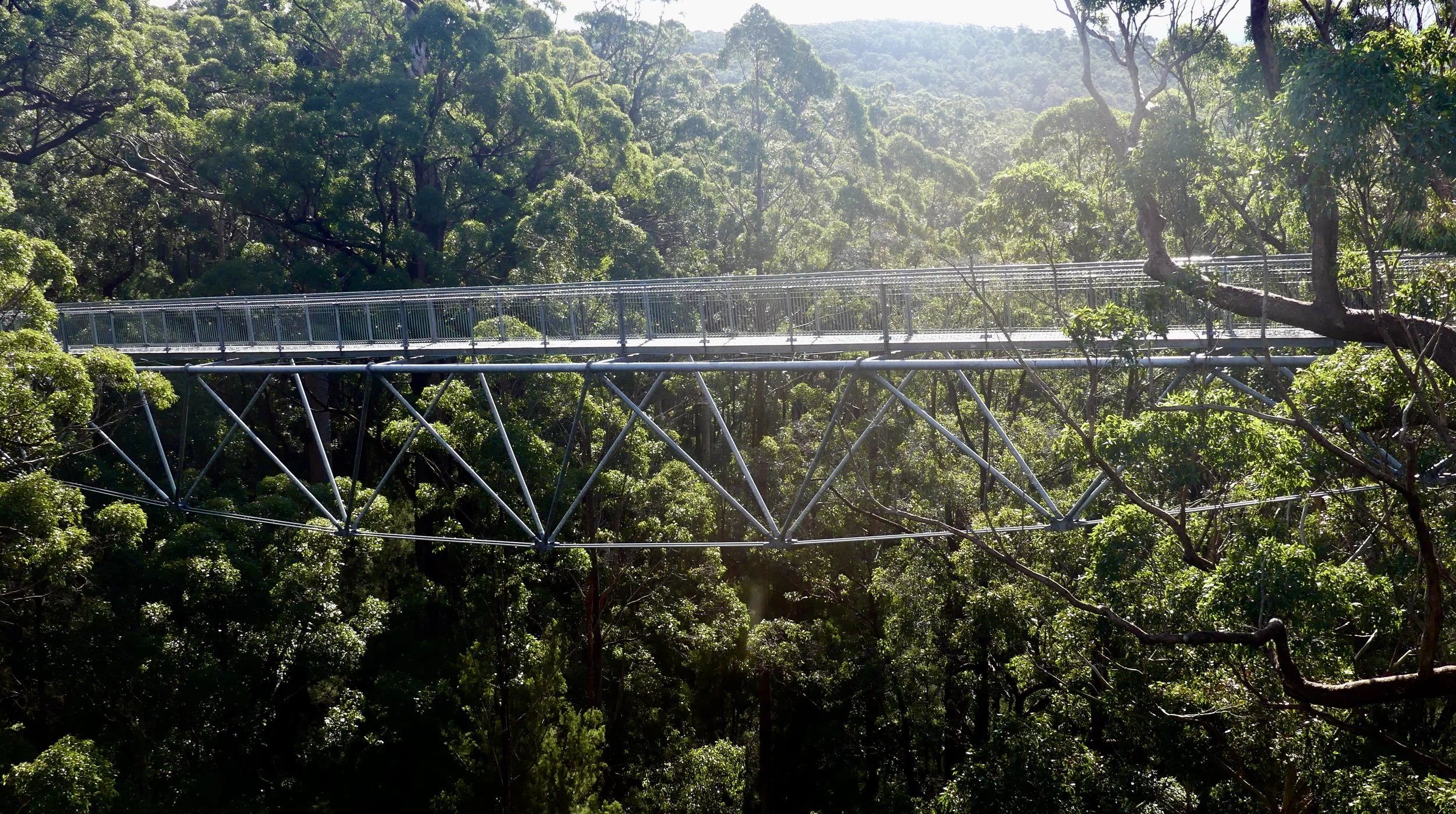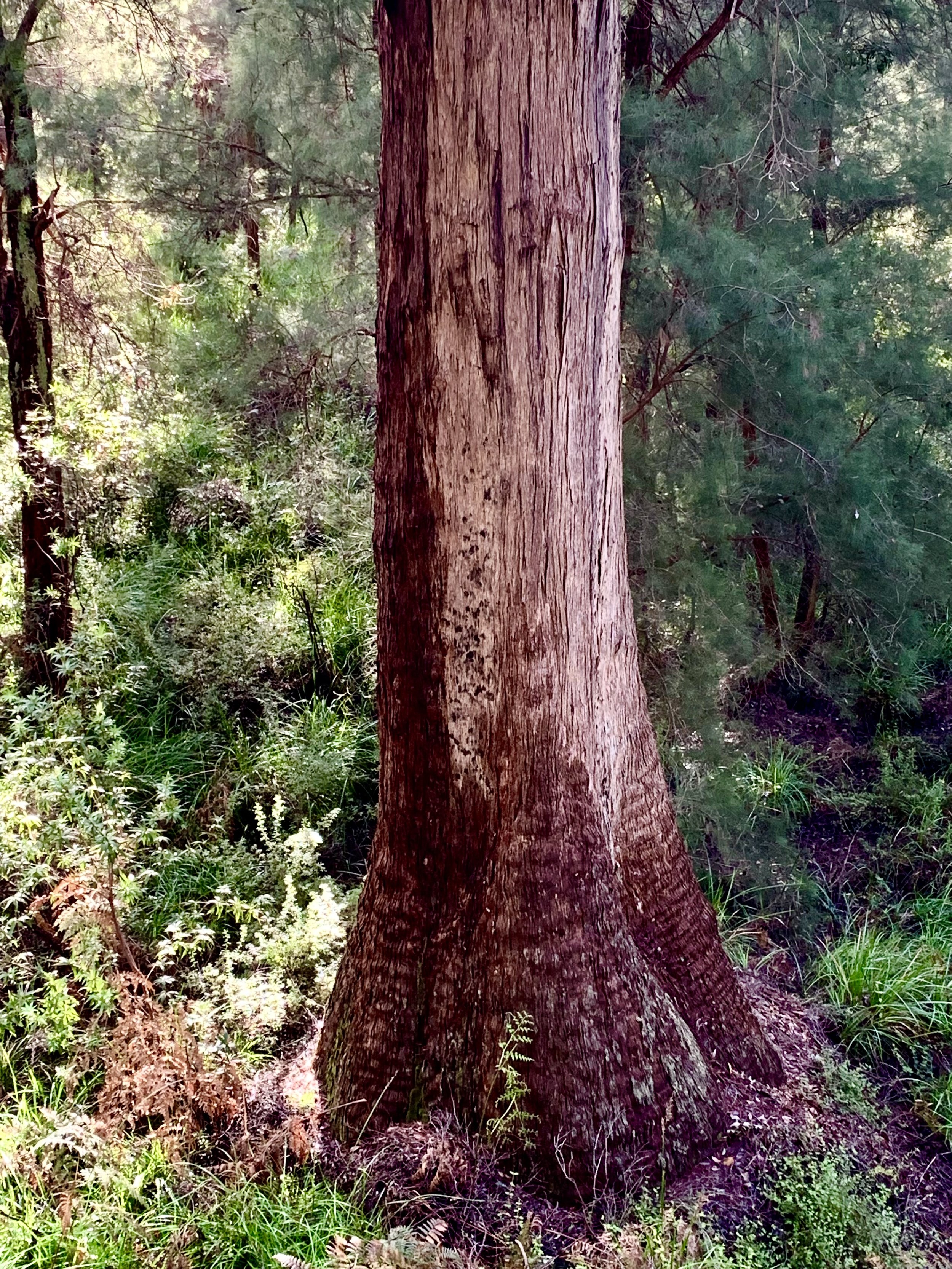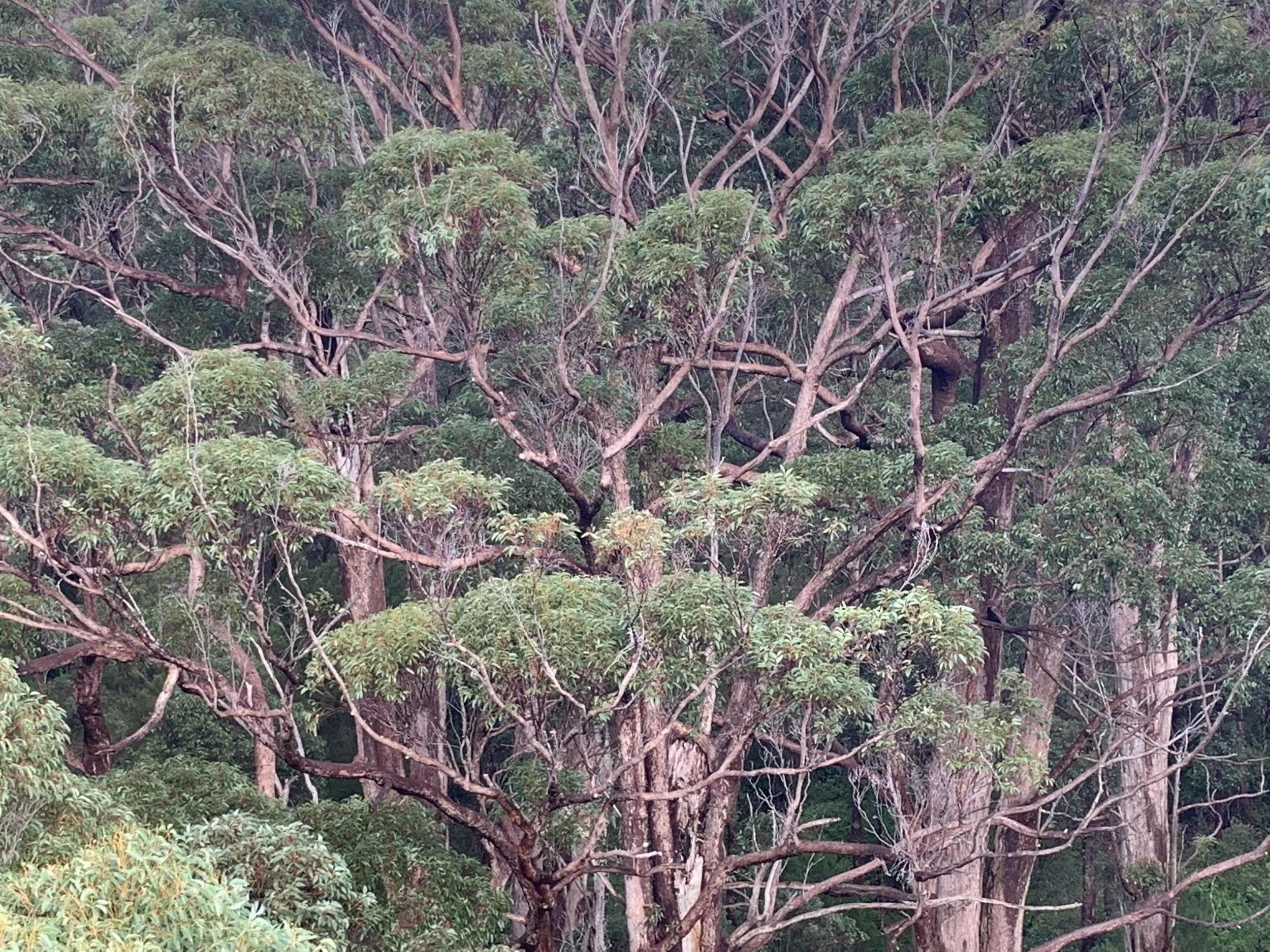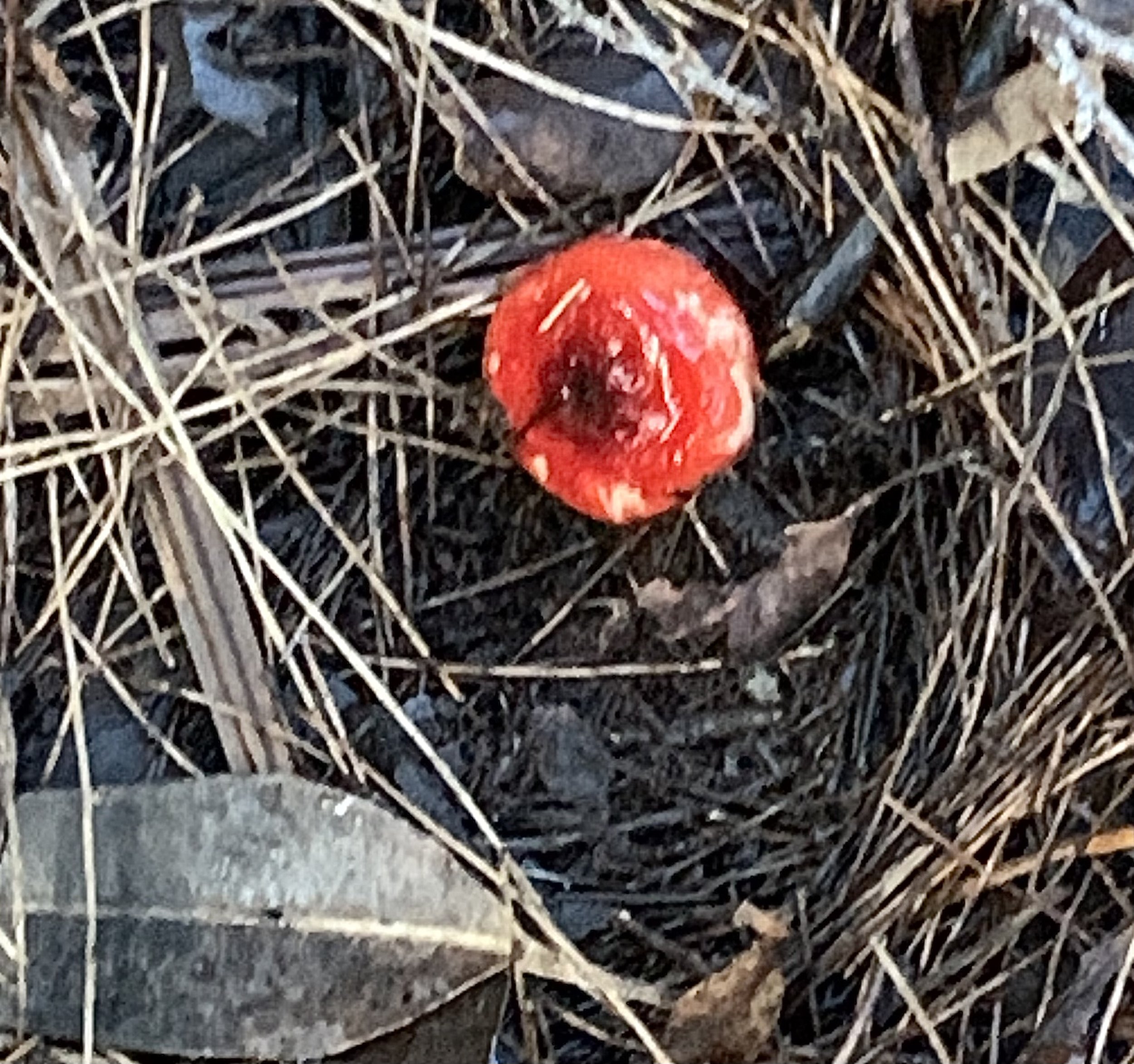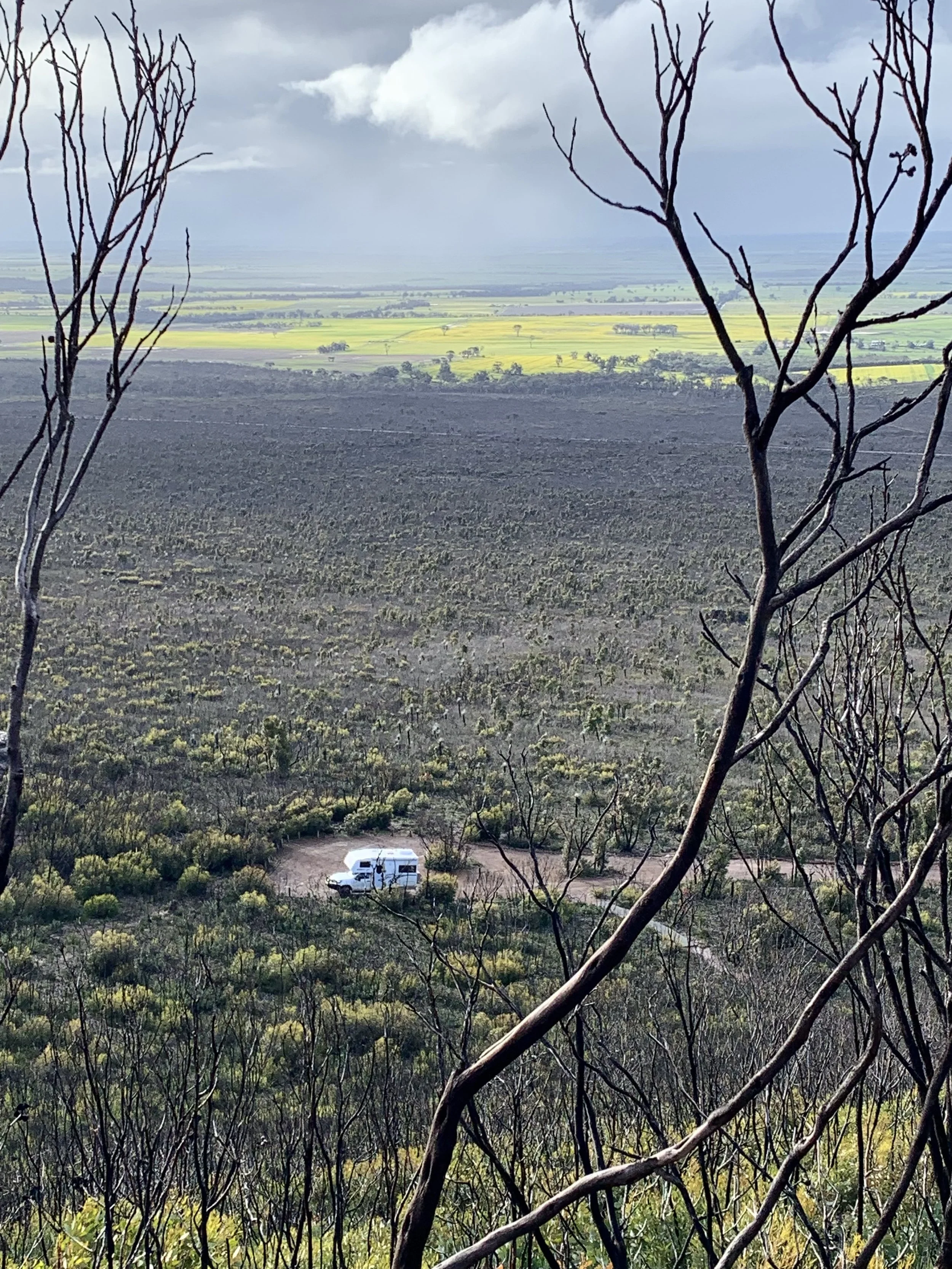Tingling feelings
In a small corner of Western Australia – Walpole-Nornalup National Park – there be giants of the natural world. Living up to 400 years, and reaching for the sky 75 metres above the forest floor, these tall trees are remnants of an ancient world. Some of the plant life hereabouts can be traced back 65 million years to Earth’s supercontinent, Gondwana.
The star of the Valley of the Giants show is the red tingle, Eucalyptus jacksonii. It has rough fibrous greyish-red bark; the circumference of its base can measure as much as 20 metres; and buttresses provide stability for what is a shallow-rooted tree. Tingles also come in yellow (E. guilfoylei). Another distinctive tree in the tingle forest is Karri (E. diversicolor), the tallest tree in WA and third-tallest in the world at 90 metres.
Karri
Tingles’ shallow roots meant they were highly sensitive to compaction of the soil around their bases as increasing numbers of visitors came to look up at them. In 1994, an elevated walkway was proposed to minimise damage to the tingles at the same time as providing a unique experience for tree lovers. Construction of the Valley of the Giants project began the following year.
The Tree Top Walk had to be constructed with minimum impact on the environment; that is, no cranes or helicopters. It consists of six 60-metre bridge spans on seven pylons. The pylons were prefabricated in Fremantle and moved to site using back-acters and lightweight trucks; then erected using scaffolding. The spans were bolted together on the forest floor, before being hoisted into position between pylons using hydraulic jacks and winches.
Walking the Walk was a delight in dappled light and occasional light rain. The spans were designed to move ever so slightly so you feel even more as if you’re part of the canopy: see-through decking reinforces the sensation that you’re up in the foliage rather than down among the trunks. Designers and engineers thought carefully about creating this experience, and it works exceptionally well. As usual, it seemed to take us much longer than most people.
Looking down from the walkway.
No doubt they were red tingles
Back on the forest floor, however, there was no shortage of ooh-aah.
Red-winged Fairy Wren
What were these, in blue or red?
A burl is an irregular-shaped growth on the trunk of a tree. The presence of insects, mites, bacteria or fungus on or in the bark initiates the production of plant growth hormones. In this way the tree forms a protective layer, a bit like the formation of a scab over a wound to human skin.
When these phenomenal trees reach 30 years of age, a flowering cycle starts. Tiny white flowers appear every four years in late summer and early autumn, and this may continue for the life of the red tingle, that is hundreds of years.
If you’ve read Great Western Woodlands, you’ll have some idea how I feel about trees. Wandering through tall tingles 40 metres above the ground was a new and wondrous experience. It may have been the closest thing to communing with trees I’ve ever done. Although I did hug a tree once, literally. But that’s another story, possibly.
There were some previously unseen signs featuring Australian fauna. Remember ‘quokka’ next time you play Scrabble.

